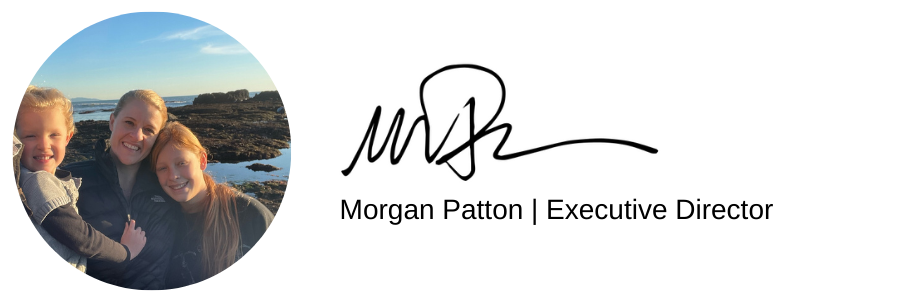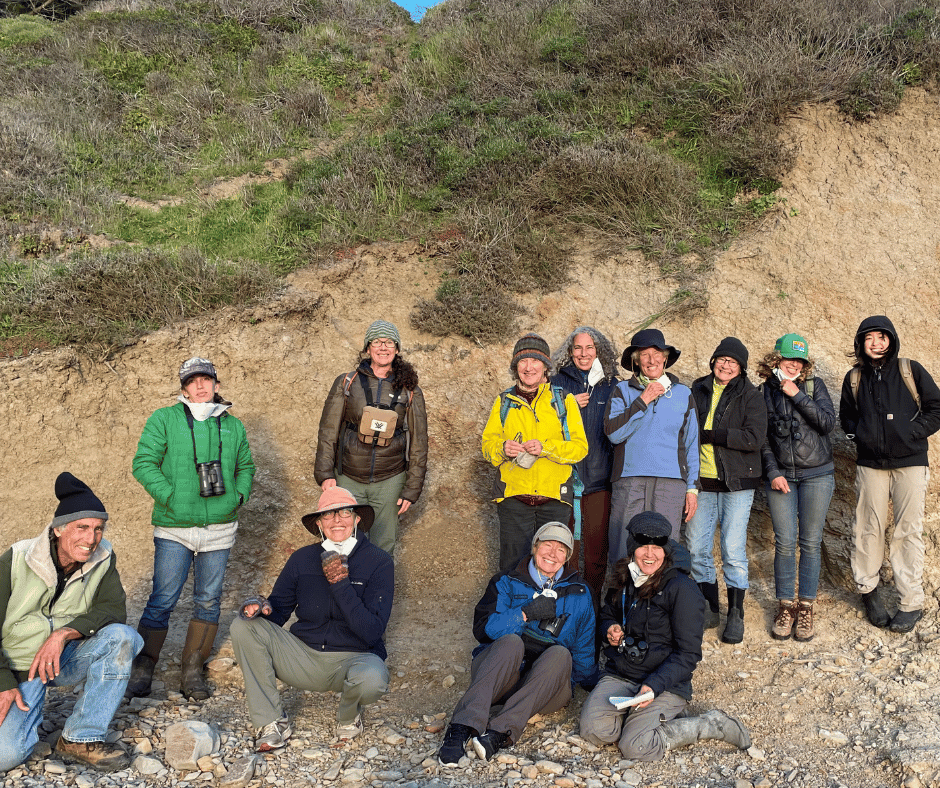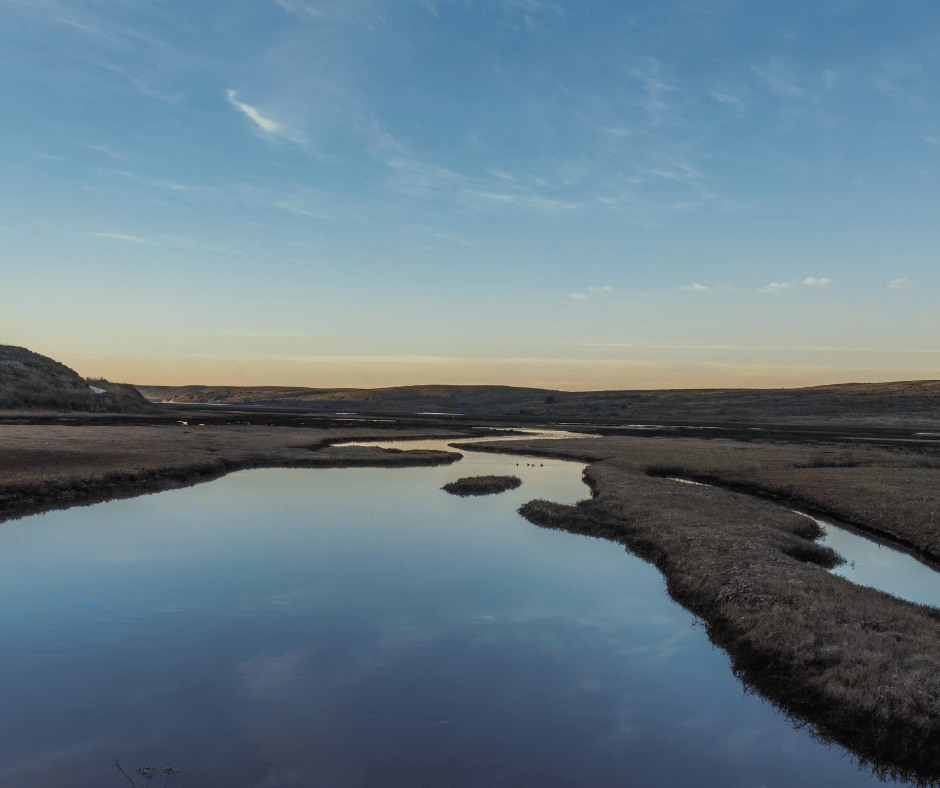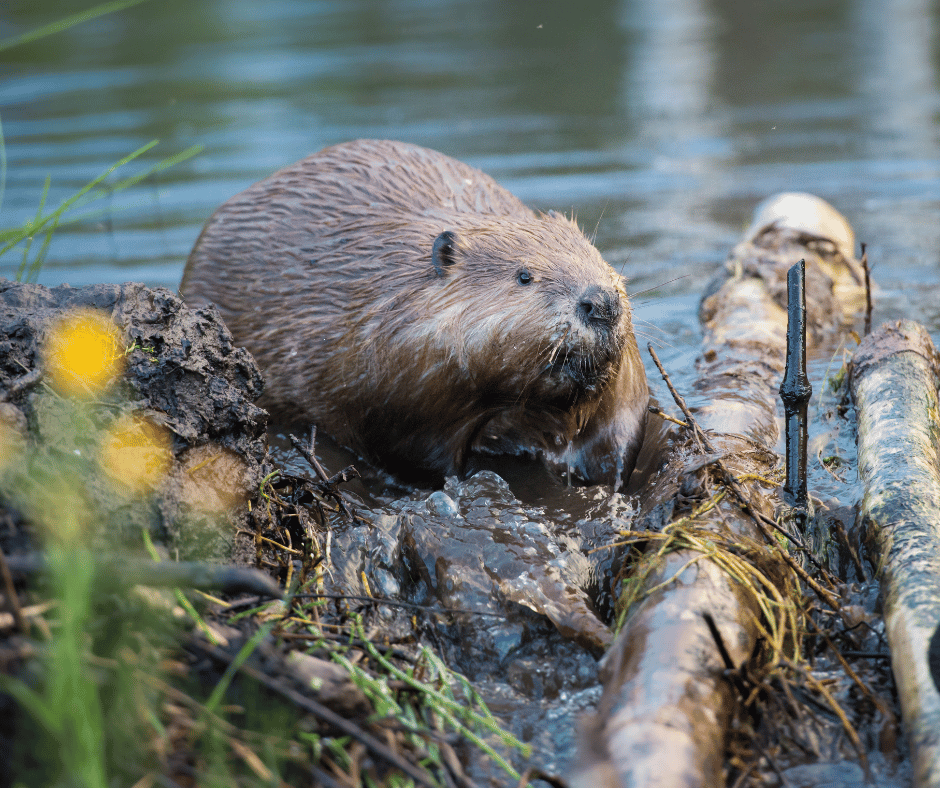| Greetings Friend, I hope this email finds you and your family well. I can't believe it is almost the end of the year and the Winter Solstice is only a few days away! This year went by very quickly. I hope you will be able to take some time to visit with family and friends as the year comes to a close. The recent rains kicked off the salmon run along Lagunitas Creek. The elephant seals are arriving at Drakes Beach, and the evening low tides are creating magical late afternoons along sandy beaches and intertidal areas. I am looking forward to taking a little time off to be with my family and enjoy the trails and beaches of West Marin and do some tidepooling with our Duxbury Docents next week. The team at EAC has been working diligently for the last two months on our advocacy campaigns, preparing for our next Duxbury Docent volunteer training, evaluating our programs, and planning for the new year. I have included some year-end updates below to catch you up on some of our work. We are also in the middle of our year-end fundraising campaign. Did you know that more than 50% of EAC's funding comes in the last month of the year? Fortunately, we are only $30,000 from meeting our goal for the year! If you have not renewed your membership or joined yet, please consider making your year-end tax-deductible gift today and help us reach our goal! Your support ensures we provide an essential voice on behalf of West Marin's natural resources. We work across the patchwork of local, state, and federal lands and waters to solve problems, create partnerships, and raise awareness for a healthy and vibrant coastal Marin County.
Please read about what your support helped accomplish this year. |
| | Finally, I am excited to report we have installed our next educational office exhibit, Advocate: Protect the Places You Love, with some fantastic local partners that feature six of our mission moments from our past, present, and looking to the future. If it wasn’t for local environmental advocates working together for decades, places like Bolinas Lagoon, Tomales Bay, Estero Americano, Tomales Dunes, Drakes Estero, and Duxbury Reef would be very different today. Our new exhibit will officially open in January on Fridays and Saturdays from 12 pm to 4 pm. Please note, our office is always open Tuesday through Friday 9 am - 5 pm if you have questions or just want to say hello to our team. However, we will have limited hours the next two weeks as members of our team will be out of the office. Thank you for supporting our work to protect the lands, waters, and biodiversity in coastal Marin. Your continued support helps us bring people, policy, and science together for positive change, and with more than 70% of our funding coming from people like you; we literally could not do it without you. In gratitude, |
|  | P.S. Last Call for our limited edition 2022 Point Reyes Birding & Nature Festival shirts and totes featuring artwork by Keith Hansen! Only available through December 31st. If you missed out on your shirt this year or wanted to get another bird (we featured three designs) now is the time to order from our online store. You can also find West Marin Wild gear for the advocate in your life. 100% of the proceeds help support our mission. |
| |
|
| | Empowering Future Advocates: EAC's Interns
Ashley Eagle-Gibbs, Legal & Policy Director, and Leslie Adler-Ivanbrook, Program Director An important part of our advocacy and community engagement work is providing high school, college, and graduate internship opportunities for young people to gain real-world job training in the environmental field. Every year, we welcome legal, policy, and coastal advocates into our internship program to gain experience in environmental policy, law, advocacy, community science, and education. These mentoring opportunities not only provide a meaningful and applicable experience that can be applied to future education and career goals, but they help to foster the environmental stewards of the future who will help protect the resilience and health of the natural world. Read More About our Interns |
|
|
|  | County Moves Forward with Unsustainable Housing Plan
Morgan Patton, Executive Director At the start of 2022, we were shocked to discover that the State of California had mandated that cities and counties plan for more than one million new housing units, as part of the Regional Housing Needs Assessment or RHNA. The RHNA happens every eight years and requires every jurisdiction to plan for a share of the state’s housing needs. For Marin County, the RHNA is more than 14,000 units. In unincorporated Marin, it’s more than 3,500 units. Here in West Marin, we are in dire need of affordable and residential housing. We support our local community land trusts and actions that support residential housing plans; however, we are very concerned about the number of units the state requires the County to plan for development in the next eight years. More than 6,000 potential units have been placed into the Housing Plan, as well as precedent-setting changes to the Countywide Plan planning corridors, and zoning to accommodate development in places the public worked to protect over the last 50 years. In late October, the County released the programmatic Draft Environmental Impact Report (DEIR) for public review. The more than 800-page document analyzed the potential impacts of the Housing Element update in the following categories as required by the California Environmental Quality Act. We submitted a letter to the County on November 21st outlining our analysis and concern that the programmatic DEIR is an inadequate and defective analysis. Information, analysis, and mitigations are missing or incomplete in several areas. Our letter provided specific comments and questions by chapter. We anticipate the release of the Final Environmental Impact Report on December 19th. We will keep you posted in the New Year after we read through the report and responses to our questions. Keep Reading and Read our DEIR Letter |
|
|
 | Duxbury Docent Program Results!
Leslie Adler-Ivanbrook, Program Director After years of advocacy, planning, and pandemic delays, we finally launched the Duxbury Docent program at Duxbury Reef at Agate Beach in Bolinas, California! The purpose of the program is to combat harm to the reef through docent-led outreach and education during low-tides, weekends, and key holidays. With increased visitation since 2018, and community reports on poaching and disturbance on the reef, we jumped into action and partnered with Marin County Parks to develop the docent program. We are happy to report some of our key stats from our first year: - 11 volunteers trained on reef ecology, flora and fauna, intertidal zonation, anthropogenic impacts, tidepool etiquette, docent protocols, and regulations of California Marine Protected Areas over five days. A big thanks to our expert instructors including Kathy Ann Miller (U.C. Berkeley), Rebecca Johnson (California Academy of Sciences), Joe Mueller (College of Marin), and Kent Khtikian (Rocky Shore Intertidal Naturalist, California Academy of Sciences).
- 61 completed shift reports and MPA Watch surveys.
- 975 visitor engagements on reef ecology, MPAs, and tidepool etiquette.
- 30 instances where docents helped visitors avoid violation of MPA regulations through education.
- 10 large-group education engagements on tidepool protection and etiquette.
We invite you to join us for our second annual Duxbury Docent training starting in January 2023. Follow the link below to learn more about the training dates, volunteer requirements, and to sign up for our 2023 team! Learn More and Join our Docent Team in 2023 |
|
|
|  | Climate Change Round-Up Ashley Eagle-Gibbs, Legal & Policy Director. Photograph by Carlos Porrata As 2022 comes to an end, we reflect on the local and statewide climate work that we have engaged in, as well as some updates and opportunities for you to get involved in resilience and adaptation planning efforts. It’s critical for policymakers to hear a local perspective, as we collectively decide how our communities will respond to the impacts of a changing climate. We updated our climate blog with year-end updates and what's to come in the new year. Read our blog for information on Stinson Beach, Tomales Bay, Local Coastal Program Update, California Sea-Level Rise Planning, and our advocacy for Blue Carbon. Our Coastal Climate Online Series
The climate crisis presents an immediate need for action. Addressing the environmental hazards associated with the impacts of a changing climate while building community resilience for Marin’s coastal communities is at the forefront of our work. These are complicated issues, and there is a need for additional public outreach and education for our communities as we collectively make decisions that have lasting impacts. In 2020 and 2021, we hosted two webinars about sea-level rise and adaptation planning. If you missed these talks and are interested in learning more about the challenges our coastal communities are facing, check them out today. Our work on climate change is ongoing. You can count on us to hold our leaders accountable to develop strong, innovative, and collaborative climate policies for our coastal communities; prioritize public access and sensitive habitat protection, and keep our community informed on studies and participation opportunities. We will advocate for use of the best available science, precautionary principles, equitable solutions, and the need to prioritize biodiversity and coastal resources. Read our 2022 Round-Up and Watch Our Coastal Climate Webinars |
| |
|
 | Bringing Back Beavers Morgan Patton, Executive Director, and Jerry Meral, Board of Directors As California grapples with the impacts of our changing climate – including drought and wildfire – research is taking place to better understand the vital role of beavers as keystone species in watersheds. Historically, beavers lived in virtually every stream in North America, but by the 1800s, they were eliminated from most of their range due to trapping, hunting, and removal as a pest or nuisance; but there is evidence they were present in Marin County prior to European contact. Beavers are skilled waterway engineers that provide ecosystem benefits to other species by creating wetlands, riparian, and wet meadow habitats. This increases biodiversity, improves water quality, repairs eroded channels, reconnects streams to floodplains, and recharges groundwater. In a 2020 study, researchers showed that beaver-dammed wildlife corridors were relatively unharmed by wildfire compared to areas without beaver dams. These benefits have finally caught the attention of the State of California. Earlier this year, the California Department of Fish and Wildlife (CDFW) received funding to develop methods for nature-based restoration solutions involving beavers. In 2023, CDFW will begin outlining a programmatic plan for the restoration of beavers at specific sites throughout the state. In 2021-2022, we participated in a feasibility study commissioned by the Occidental Arts & Ecology Center assessing the potential to reintroduce beavers in western Marin County. We would like to thank EAC board director, Jerry Meral, who took the lead on community outreach and obtained letters of support from private property landowners, the County of Marin, and Marin Water in support of beaver reintroduction. We are currently working with a coalition of beaver believers to support CDFW’s efforts for beaver reintroduction at headwater sites and with tribes; provide outreach and education to community members; and work on regulatory gaps, like addressing the issue that beavers are still listed as a nuisance rodent that allows for depredation permits to be issued to remove beavers. A potential reintroduction site in West Marin includes a portion of Lagunitas Creek near Black Mountain Ranch. We are looking forward to engaging in this work and exploring the benefits that beaver reintroduction could bring to West Marin. More to come! |
| |
|
| | Learn More About Our Campaigns & Programs |
| We endeavor to keep our website up to date with the latest information on our campaigns and included some quick links in case the topic you're most interested isn't featured in this month's e-news! Some links to campaigns below or click on the images to view those pages directly. |
|
|
| | | |  | Did you know you can set up a recurring gift online? Whether you choose to set up an annual recurring gift,
or want to spread out your giving monthly or quarterly, a recurring gift is
a great way to provide stable income to our nonprofit, so we can stay focused on our environmental protection advocacy work and impact on our community - thank you! |
| MISSION To protect and sustain the unique lands, waters, and biodiversity of West Marin.
We achieve this goal through advocacy, education and engagement opportunities. VISION Our work strives to provide long-term protection and conservation of the unique ecosystems and rural communities of West Marin, and serves as a foundation of environmental protection for future generations. |
|
|
| | Our Online Store - Giving with Purpose Give a gift to the advocate in your life and support our mission.
Shop hats, totes, tees, sweatshirts and more in a variety of styles. Shop Now |
| |
|
| Contact Us Environmental Action Committee of West Marin (EAC)
PO Box 609 | 65 Third Street, Suite 12
Point Reyes Station, CA 94956
(415) 663.9312 | info@eacmarin.org
www.eacmarin.org | www.pointreyesbirdingfestival.org |
| FOLLOW US We frequently post updates
on our social media networks including
information on weekly water quality results,
program news, and other alerts. |
|
|